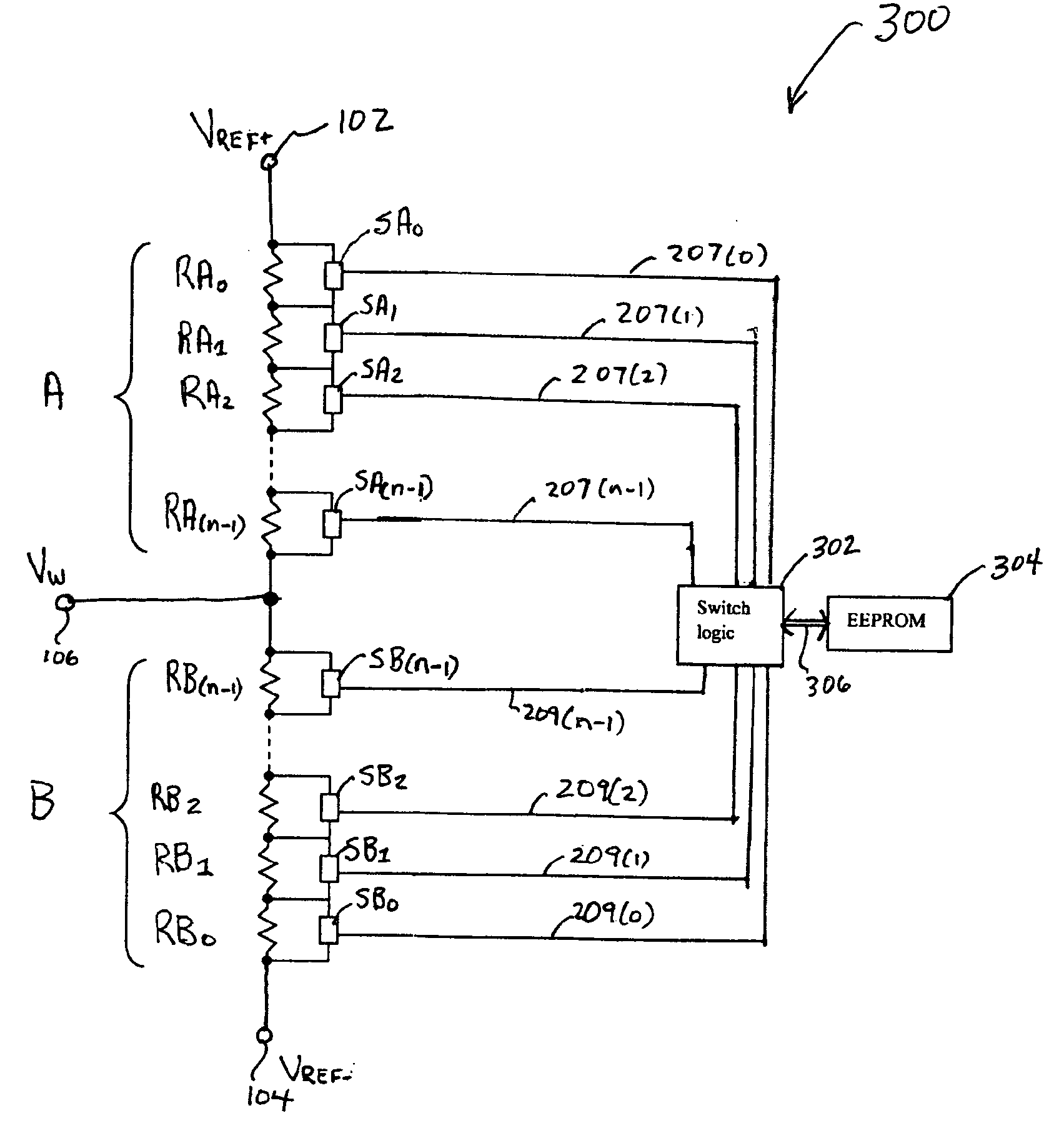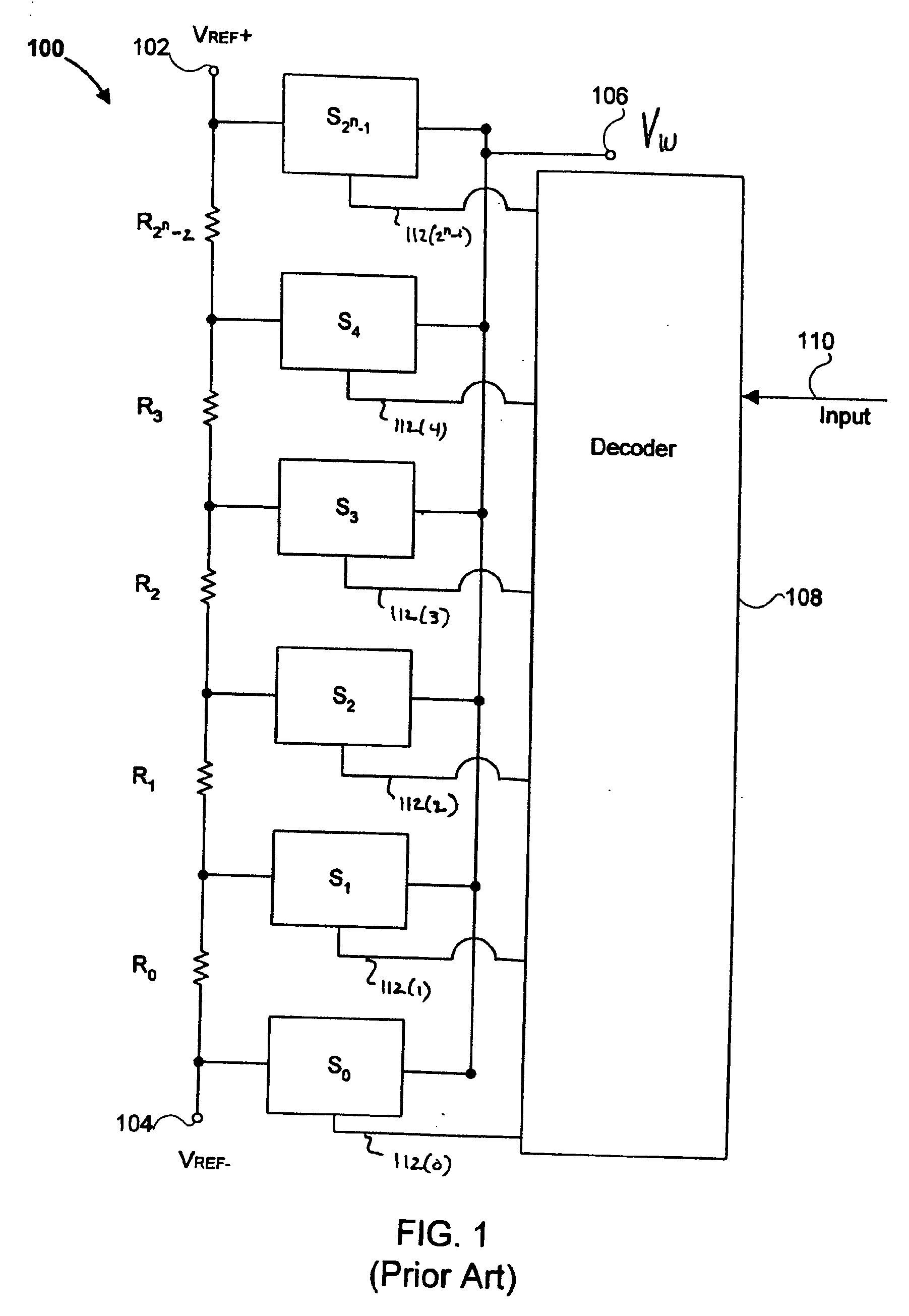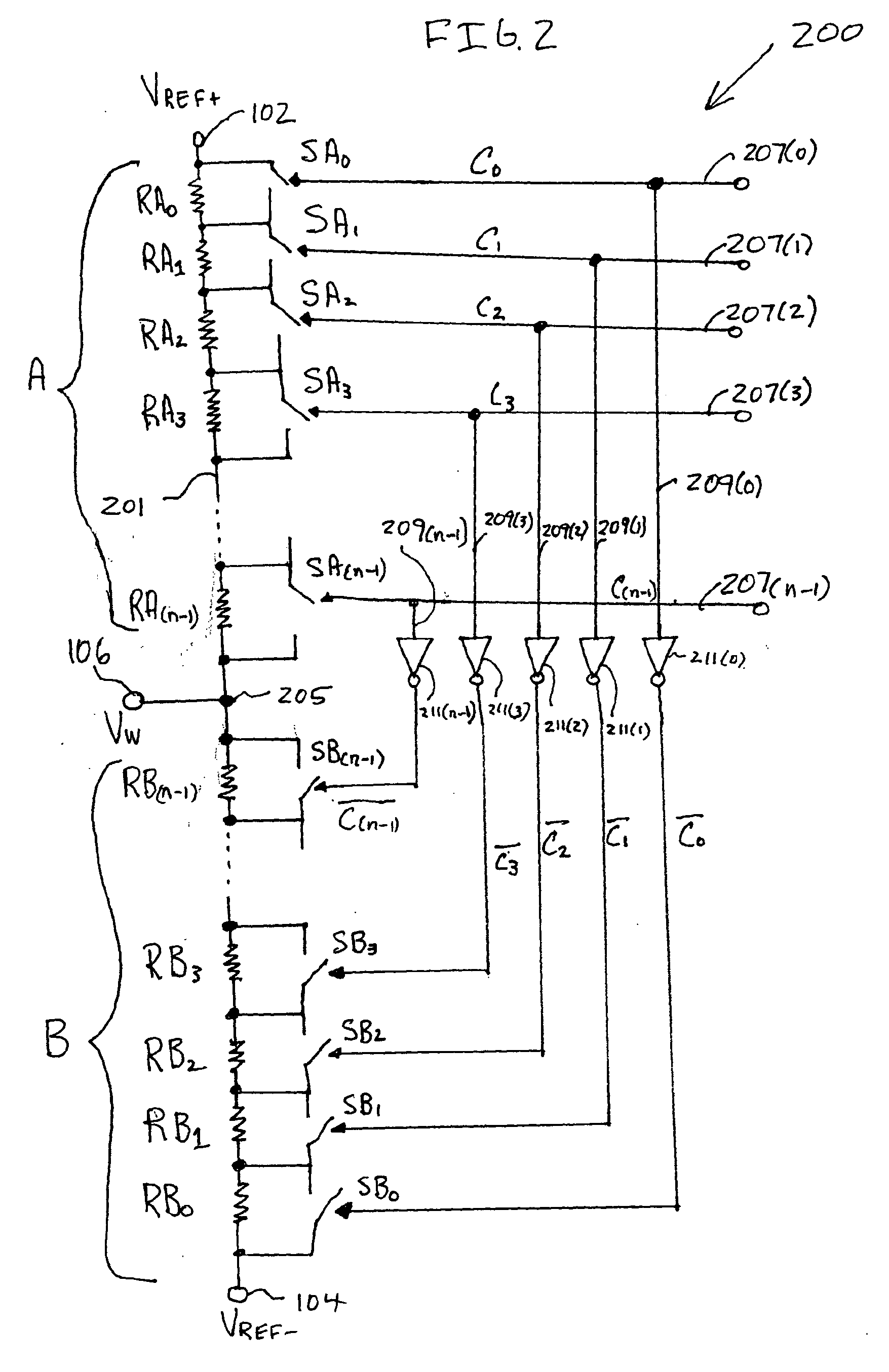Digital potentiometer with resistor binary weighting decoding
a digital potentiometer and resistor technology, applied in the field of digital potentiometers, can solve the problem of relativly large number of components needed to implement the digital potentiometer
- Summary
- Abstract
- Description
- Claims
- Application Information
AI Technical Summary
Benefits of technology
Problems solved by technology
Method used
Image
Examples
example 1
[0047] Assume that the digital potentiometer 200 has a four bit (i.e., n=4) wiper address, and accordingly has 24, i.e., 16, wiper positions. In such an instance, string 201 of digital potentiometer 200 will include a total of eight resistors in series, with four resistors RA0-RA3 in first set A and four resistors RB0-RB3 in second set B of string 201. The mirror image first resistors RA0 and RB0, which are coupled to terminals 104 and 102, respectively, have a same resistance of 20*R0, i.e., R0. The mirror image second resistors RA1 and RB1 have a resistance of 21*R0, i.e., 2*R0. Mirror image third resistors RA2 and RB2 have a resistance of 22*R0, i.e., 4*R0. Finally, the mirror image fourth resistors RA3 and RB3, which are both coupled to node 205, have a same resistance of 23*R0, i.e., 8*R0. In such a configuration, the total resistance of each of first set A and second set B of string 201 is 2n−1*R0, i.e., 15*R0. Moreover, the digital potentiometer 200 will have a total of eight...
example 2
[0076] Assume that the digital potentiometer 400 has an eight bit (i.e., n=8) wiper address, and accordingly has 28, i.e., 256, wiper positions. As mentioned, the value of m may be selected in cases where n≧4, provided that m≧2, in order to optimize the number of resistors and switches of the digital potentiometer 400 for a particular application. For this example, assume that m=4, so that p=4, i.e., n−m=4. In such a case, string 401 will include a total of 23 resistors in series, with four resistors RA0-RA3 in first set A, four resistors RB0-RB3 in second set B, and fifteen resistors RC0-RC14 in third set C.
[0077] Within the first and second sets A and B of string 401, the mirror image first resistors RA0 and RB0, which are coupled to terminals 104 and 102, respectively, have a same resistance of 20*R0, i.e., R0. The mirror image second resistors RA1 and RB1 have a resistance of 21*R0, i.e., 2R0. The mirror image third resistors RA2 and RB2 have a resistance of 22*R0, i.e., 4*R0. ...
example 3
[0084] Assume that another version digital potentiometer 400 has an eight bit (i.e., n=8) wiper address, and accordingly has 28, i.e., 256, wiper positions. As mentioned, the value of m may be selected in cases where n≧4, provided that n≧3>m≧2, in order to optimize the number of resistors and switches of the digital potentiometer 400 for a particular application. For this Example 3, assume that m=5, so that p=3, i.e., n−m=3. In such a case, string 401 will include a total of 17 resistors, with five resistors RA0-RA4 in first set A, five resistors RB0-RB4 in second set B, and seven resistors RC0-RC6 in third set C. The sequential resistors RA0-RA4 and RB0-RB4 will have values of 20*R0, 21*R0, 22*R0, 23*R0, and 24*R0, i.e., R0, 2R0, 4R0, 8R0, and 16R0, respectively. Moreover, each of the seven resistors RC0-RC6 will have a value of R0 / (23−1) i.e., R0 / 7.
[0085] In addition, the digital potentiometer 400 will have 18 switches, including five switches SA0-SA4, five switches SB0-SB4, and ...
PUM
 Login to View More
Login to View More Abstract
Description
Claims
Application Information
 Login to View More
Login to View More - R&D
- Intellectual Property
- Life Sciences
- Materials
- Tech Scout
- Unparalleled Data Quality
- Higher Quality Content
- 60% Fewer Hallucinations
Browse by: Latest US Patents, China's latest patents, Technical Efficacy Thesaurus, Application Domain, Technology Topic, Popular Technical Reports.
© 2025 PatSnap. All rights reserved.Legal|Privacy policy|Modern Slavery Act Transparency Statement|Sitemap|About US| Contact US: help@patsnap.com



